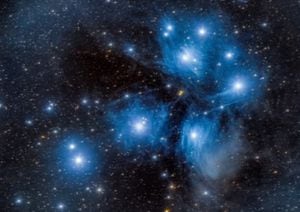Shropshire Sky At Night – December
Even with Covid-19 restrictions, December will fly by with the winter solstice this year on December 21.

This is when we celebrate the longest hours of darkness or Yuletide, which, to some, indicates the rebirth of the sun and is believed to hold a powerful energy for regeneration, renewal and self-reflection, with the moon centre stage.
With so many stories, myths and legends associated with this period of winter festivals, there is something in the night sky for everyone.
The Christmas Star features in many such stories, but there is very little astronomical evidence to support the many theories of its existence, which includes being a possible supernova, a bright comet or a planetary conjunction. However with the constellation of Orion (The Hunter) firmly planted high in the south eastern sky we can use its distinctive shape to identify a number of glorious sights.
On a clear night you will be able to identify a fuzzy patch just below his sword, hanging from his belt, which is a rich stellar nursery giving birth to new stars.
Follow the line of Orion's belt to the west and you will come across the bright orange star Aldebaran, the eye of Taurus the bull. If you look carefully you will see a small v-shaped group of blue stars known as the Hyades open cluster. Still further to the west you will reach Pleiades, another open cluster, known as the Seven Sisters.
These can all be seen with the naked eye but a pair of basic binoculars will provide you with awe-inspiring views.
December 21 sees a rare conjunction of Jupiter and Saturn. A conjunction is when two objects are very close together as seen from Earth. This rare conjunction of these two planets is known as the great conjunction. Appearing only seven arc minutes apart, they will be so close that they will appear to make a bright double planet.
Look to the west just after sunset and be prepared to be impressed.
With December's full moon being on the penultimate day of the month, those who like spotting shooting stars, officially referred to as meteors, will be treated to several opportunities, if the weather permits. The Geminids is the best of the meteor showers producing up to 120 multicoloured meteors per hour in ideal condition. The shower runs between the 7th and 17th but peaks over the night of 13th. The 21st offers us a second chance with the Ursids peaking overnight.
Best viewing in both cases will be just after midnight from a dark location. Either wrap up warm and be inspired by the wondrous sights, or just spend your time exploring the stories and myths with a book in front of a blazing fire. Whichever path you choose stay safe and enjoy your own festive season.
Steve Szwajkun is a member of Shropshire Astronomical Society





